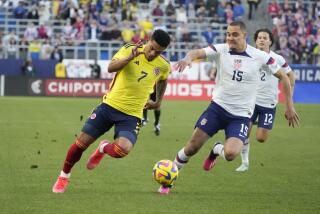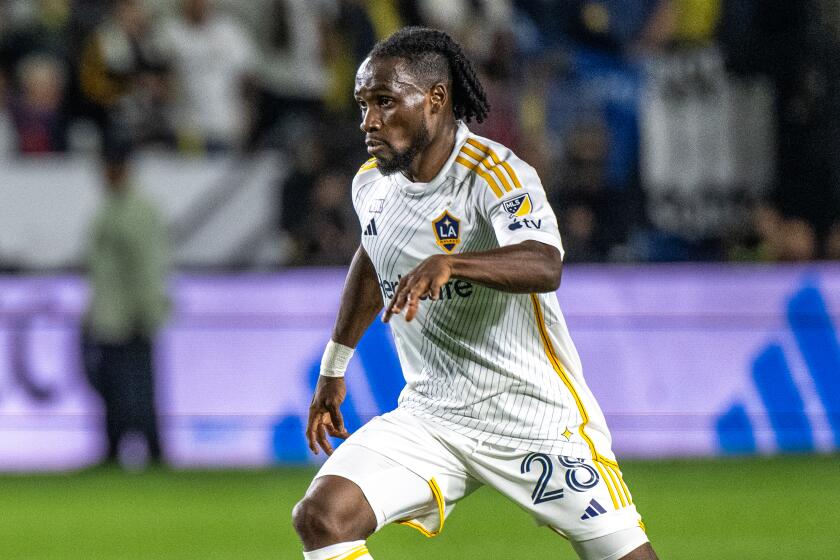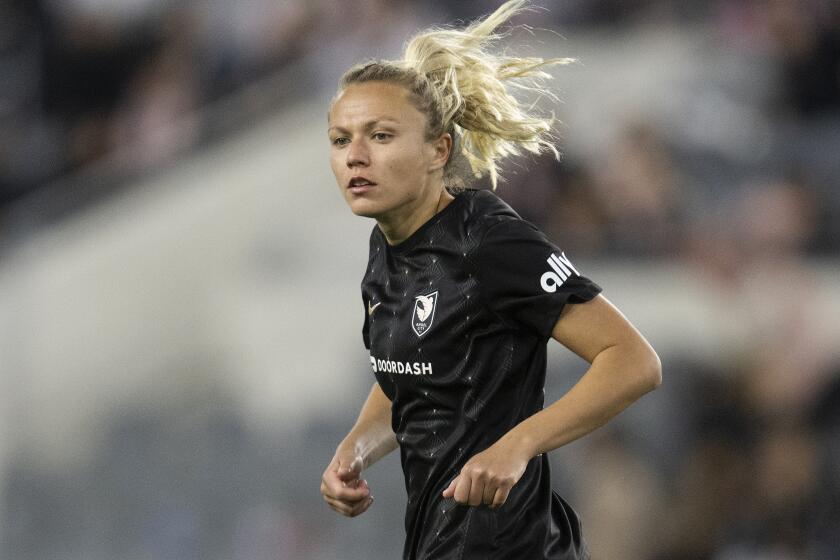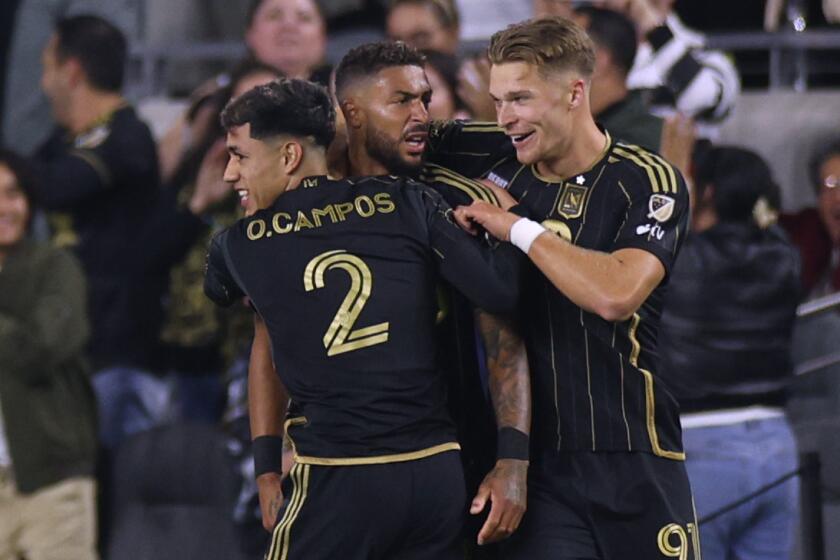Mexico sure to have home-field advantage at Rose Bowl in Copa America match with Jamaica
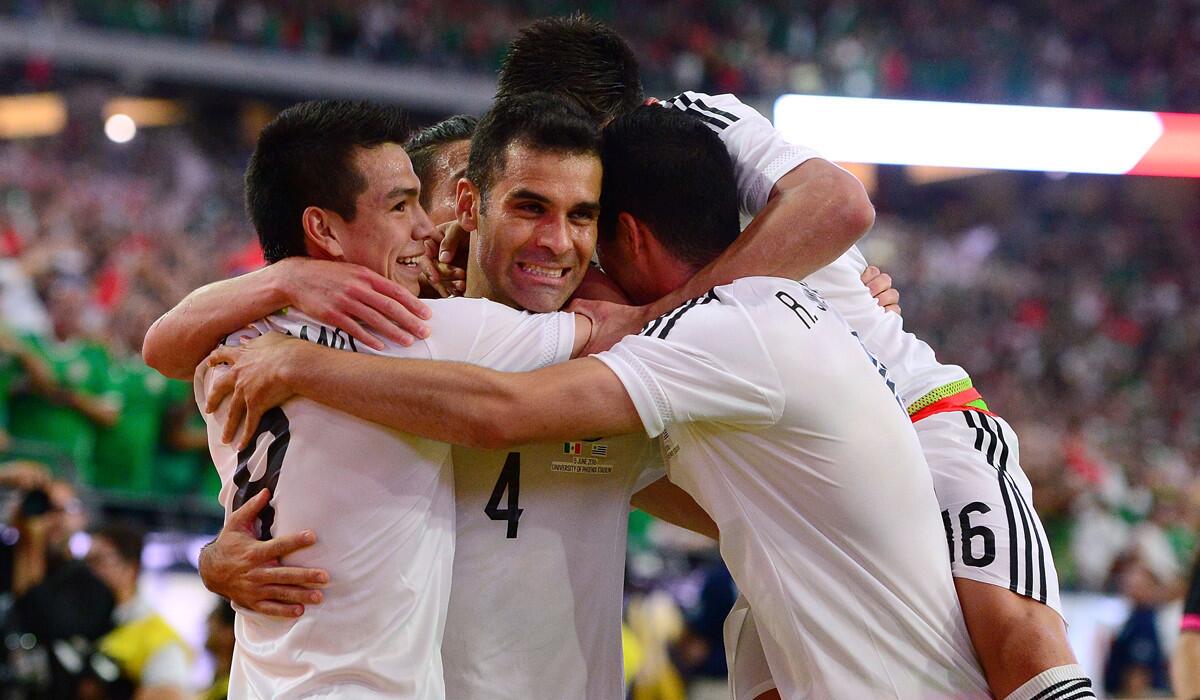
After coaching 10 teams in five countries over the last 15 years, Juan Carlos Osorio was pretty confident there was nothing about soccer that could surprise him.
Then he strode into Atlanta’s Georgia Dome two weeks ago ahead of an inconsequential exhibition match, his first U.S. game as coach of the Mexican national team, and saw a crowd of 63,000. Four days later more than 68,000 showed up for a friendly in San Diego. And four days after that, in its Copa America Centenario opener, Mexico drew 60,000-plus in Glendale, Ariz.
Three games in three states played before more than 190,000 people — and two of those games didn’t even count. Mexico is expected to draw another 80,000 to the Rose Bowl on Thursday when it meets Jamaica in its second group-play game of the Centenario (FS1, Univision, UDN, 7 p.m.).
It’s a level of support the Colombian-born Osorio willingly concedes was a surprise.
“We had an idea what the national team means to the people,” said Osorio, who was named Mexico’s coach last October. “But we didn’t realize quite enough the passion the Mexican people had for the national team.”
Passion? That’s putting it mildly.
With more than 35 million people of Mexican heritage living in the U.S., El Tri is arguably one of the most popular sports teams in the country. That’s one reason why Univision paid a reported $60 million for the Spanish-language broadcast rights to the Centenario, four times what Fox Sports paid to do the tournament in English.
It’s also why Mexico has drawn the nine largest crowds for an international soccer game in this country since the last World Cup, topped by the 93,723 that packed the Rose Bowl for the CONCACAF playoff with the U.S. last fall. And that gives Mexico the home-field advantage even when it’s technically on the road.
“Every time we play here in the United States we’re privileged, we’re blessed to have the support of the people here, our Mexican countrymen, that come and fill every stadium we play in,” defender Hector Moreno said in Spanish. “And the only way we can return that support is to give everything on the field and get a good result, win the game, so that everyone goes home happy.”
That’s happened a lot lately, with Mexico taking a 20-game unbeaten streak into Thursday’s game, the longest active streak in international soccer. Fifteen of those games were played in the U.S., where El Tri won last summer’s Gold Cup by beating Jamaica, 3-1, in the final.
One more win Thursday and Mexico secures a berth in the Centenario quarterfinals.
But Mexico comes into the rematch a little banged up. Midfielder Andres Guardado, who scored the go-ahead goal in all three Gold Cup knockout-round games, will sit out after drawing two yellow cards in Sunday’s win over Uruguay. He might have sat out anyway, since he also hurt his ankle in that game.
Replacing Guardado will require “a collective effort,” said Osorio, who plans to start an athletic lineup to counter Jamaica’s speed and physicality.
The fans insist they will do their part as well.
“Playing in front of such a large home crowd gives the Mexican team an edge that no other teams in the tournament have,” said Manny Arias of Pasadena, who has attended several Mexico games at the Rose Bowl. “I honestly feel that the players can sense and feed off our positive vibe. I don’t think they get that feeling anywhere else other than at Estadio Azteca in Mexico City.”
Defender Jorge Nilo Torres agreed.
“We have a lot of fans here and we feel it,” he said.
But he stopped short of giving the fans all the credit for the team’s success, as did star striker Javier “Chicharito” Hernandez.
“It’s going to be a better scenario for us. It’s going to help,” said Hernandez, whose national team jersey sold better in Southern California than that of any other player during the last World Cup. “But to make a difference? I don’t know.”
But, he hastened to add, it’s better than the alternative.
“Definitely,” he said. “It’s going to be better to have a lot of fans to feel more [at home] than other countries.”

